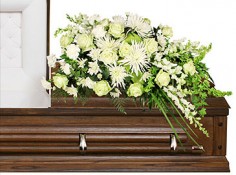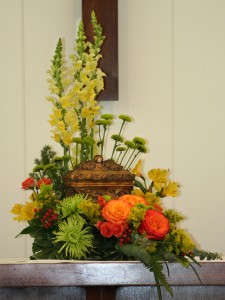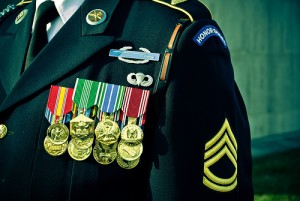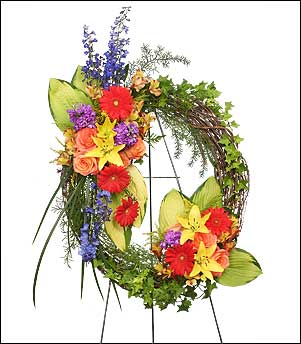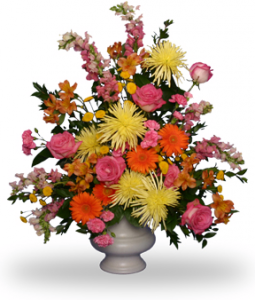Although both funeral flowers and sympathy flowers are sent for the same reasons – respect, condolences, and comfort during times of grief, there are important differences between the two. Determining what is appropriate comes from consideration of the bereaved and your relationship with the deceased. Understanding the significance and various uses of flowers will help you work with your florist to send just the right message.
What’s the Difference?
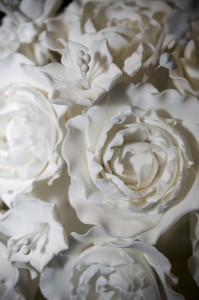 Funeral flowers refer to tributes and memorials meant to honor the deceased and are sent directly to the funeral home. These flowers are larger with a more dramatic appearance as typically seen in standing sprays and casket covers. Majestic arrangements with striking features provide beauty and are an important focal point during the visitation and ceremony. Depending on the funeral home and the family’s wishes, these flowers are often transferred to the grave site after the service. Though the family commonly selects the flowers that are arranged directly on the casket, other tributes can come from family and friends to show their respects. These types of arrangements are associated with death and the funeral ceremony and should never be sent to the home out of respect for the feelings of those who have lost their loved ones.
Funeral flowers refer to tributes and memorials meant to honor the deceased and are sent directly to the funeral home. These flowers are larger with a more dramatic appearance as typically seen in standing sprays and casket covers. Majestic arrangements with striking features provide beauty and are an important focal point during the visitation and ceremony. Depending on the funeral home and the family’s wishes, these flowers are often transferred to the grave site after the service. Though the family commonly selects the flowers that are arranged directly on the casket, other tributes can come from family and friends to show their respects. These types of arrangements are associated with death and the funeral ceremony and should never be sent to the home out of respect for the feelings of those who have lost their loved ones.
Sympathy flowers are intended for the family of the loved one as a sign of hope, support, and friendship and are often delivered to the home or funeral home. These gifts can vary greatly from large houseplants intended for long-lasting stewardship to compact and delicate arrangements that grace coffee and end tables.
By making the distinction between funeral and sympathy flowers
when communicating with your local florist, he or she can get a better idea of what type of arrangement best suits the situation.
Types of Funeral and Sympathy Flower Arrangements
Casket Cover or Spray
Casket covers, also called casket sprays, are designed to rest on the lid of the casket. Because family members make the decision about open or closed casket, they should also make the decision about these arrangements .
Full-couch covers extend the entire length of the closed casket or are affixed to the lid of an open casket. Half-couch sprays or foot sprays extend only over half of the casket. Flower garlands can also drape the casket.
Interior Casket Flowers
Flowers that are designed to go directly in the casket should also be determined by the close family due to the proximity to the deceased. These casket inserts are often sent by younger members of the family such the children or grandchildren. There are many options including flower rosaries, nosegays, corner clusters, satin pillows or crosses, hinge sprays, and sheaves.
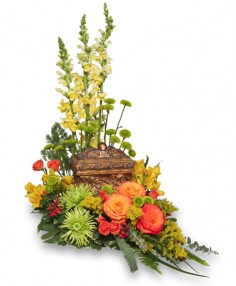 Cremation Flowers
Cremation Flowers
When an urn is present at a funeral ceremony, it can be displayed on a pedestal or table. Flowers that accompany the urn help make it a focal point in the room. They can be large or small arrangements that set beside the urn or a florist can create a piece that surrounds it. Like casket flowers, cremation flowers should be selected by the close family.
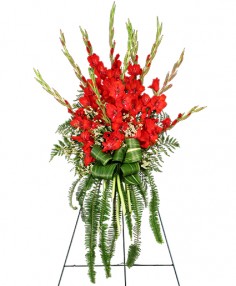 Standing Spray or Easel
Standing Spray or Easel
A floral tribute that is designed to stand 1 to 3 feet off the ground with a wooden or metal stand are called stranding sprays or easels. Typically meant to be viewed only from the front, they are displayed around the casket or urn to create a backdrop.There are many different designs available, including symbolic shapes like crosses and hearts. These arrangements can be sent by people who knew the departed or as a service tribute.
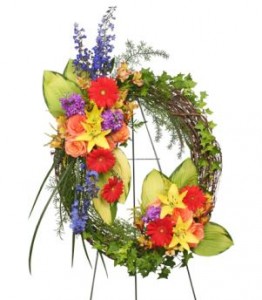 Wreaths
Wreaths
Wreaths are traditional funeral tributes that symbolize eternal life. They are placed on stands or hung near the casket or urn display and can be sent by anyone who knew the deceased. Often the choice of individuals and groups wanting to honor the departed for their lifetime of service.
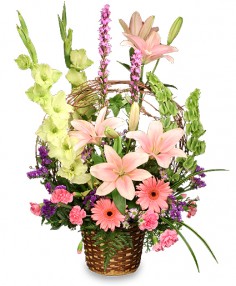 Floral Baskets
Floral Baskets
These arrangement are available in a vast array of sizes and shapes. Fireside baskets, which usually have a handle are designed to rest on the floor in front of the casket or standing sprays. Smaller baskets can be placed on tables or ledges. This selection is appropriate to send directly to the funeral home or to a family member’s house.
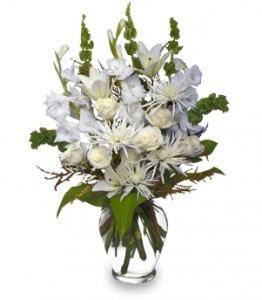 Table or Vase Arrangements
Table or Vase Arrangements
Much like floral baskets, these arrangements are acceptable for both funeral home and home delivery. They tend to be smaller and sometimes are very personalized by utilizing designs and colors that reflect the decease’s interests.
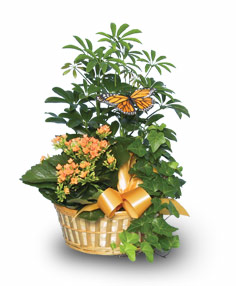 Houseplants
Houseplants
Intended as a gift to the family as a sign of friendship and support, houseplants of all types can be sent to the home or to the funeral home for display. Sometimes fresh-cut flowers are added for the occasion or colored bows or ribbons included.
Practical Considerations
Funeral services are sometimes spread out over multiple days. One thing to consider when shopping for an arrangement is when the flowers will be delivered and how long they will be on display. Standing sprays, wreaths or funeral crosses often contain flowers that do not have direct access to water and can dry out if no one is available to tend them. These options are not a problem if the service is only one or two days. But if the viewing and ceremony are more spread out, opt for bouquets in a basket or container with floral foam so flowers will stay hydrated without much maintenance.
At times, families will request that donations be made in lieu of flowers. This is a request that should be honored. If you had a close relationship to the deceased and feel strongly about sending a floral tribute, considering sending both a donation and flowers as your budget allows. Your bereavement is valid and you should acknowledge it how you see fit. But respect for the families wishes should be foremost. If you decide to send flowers, be sure to include on the condolence card that a donation has been made in honor of the departed.
The Meaning of Flowers
When a death occurs, there is often a loss of words. By working with a skilled florist, you can send flowers that celebrate life and convey your feelings. Flowers can help state what is too difficult and painful to relay: our lives are deeply touched by those we love and their absence changes us forever.
